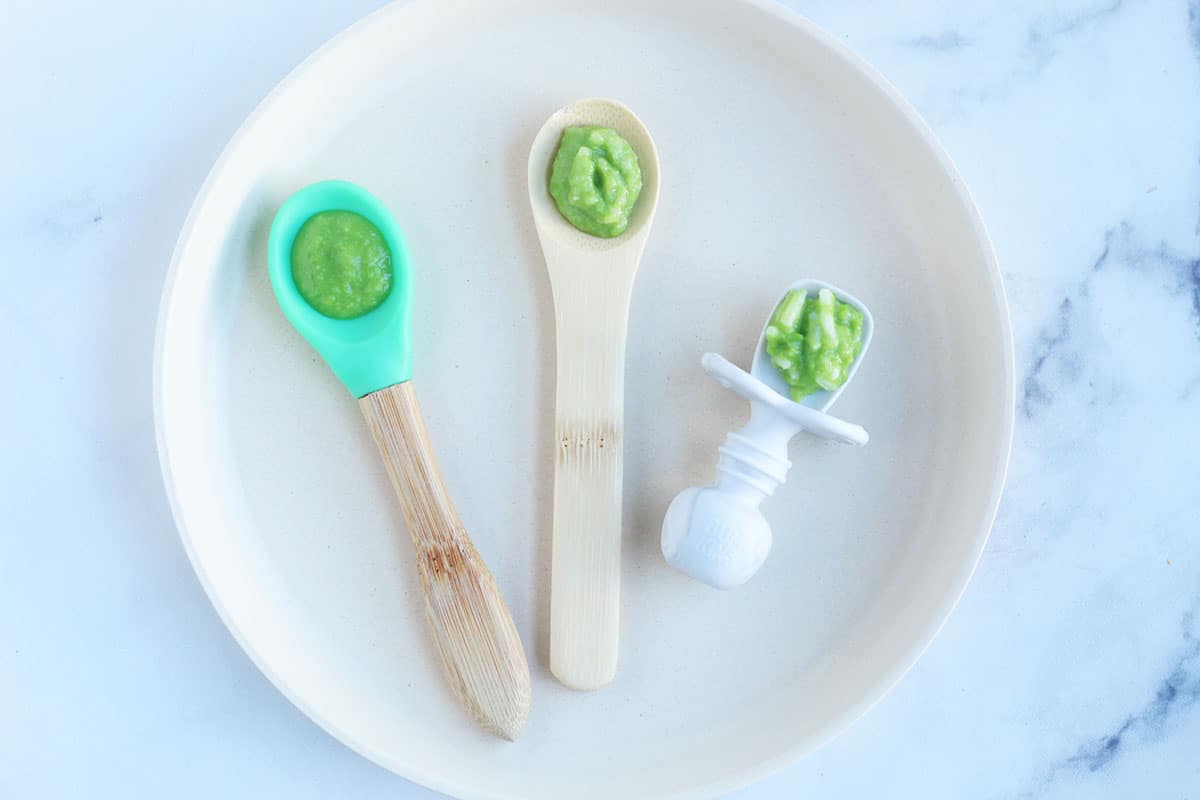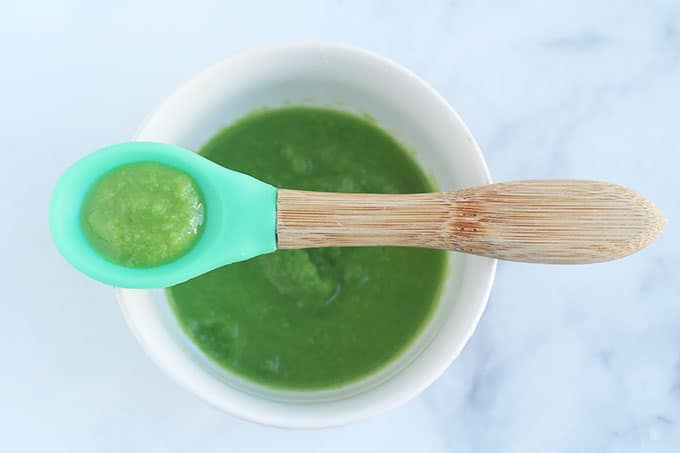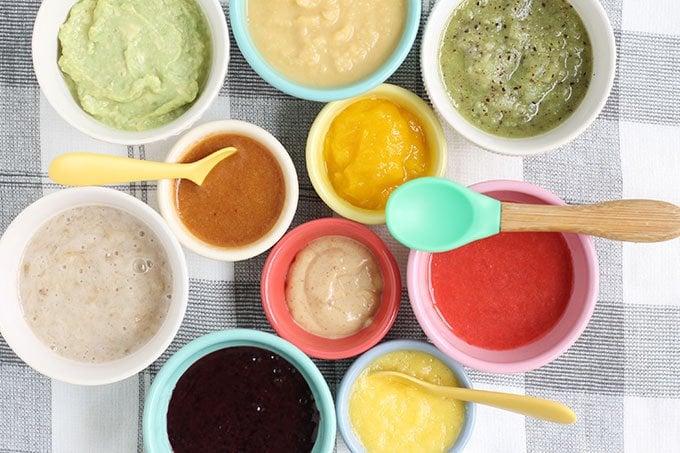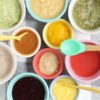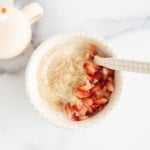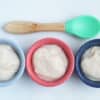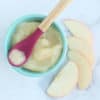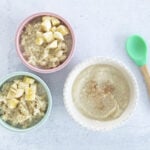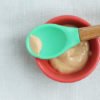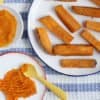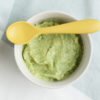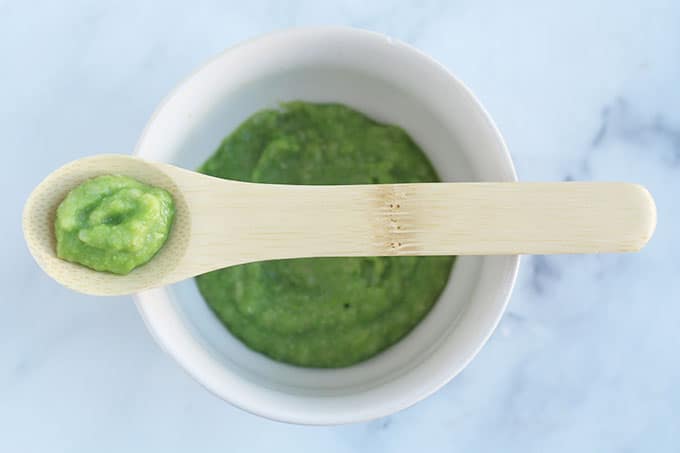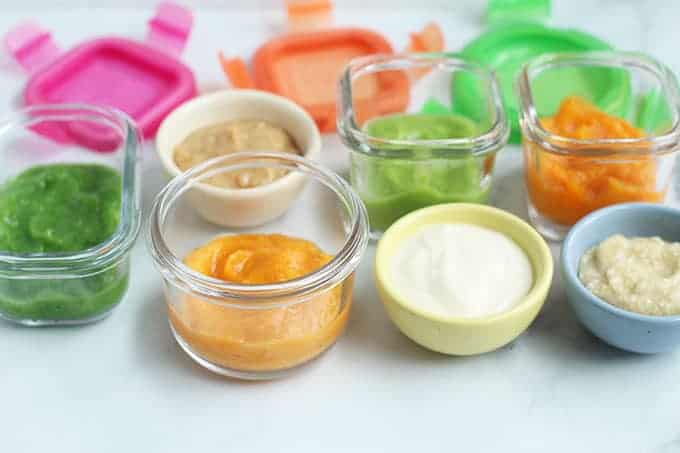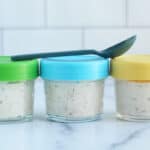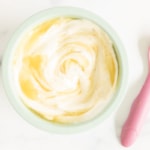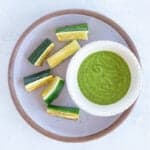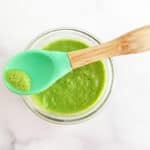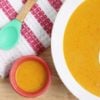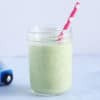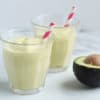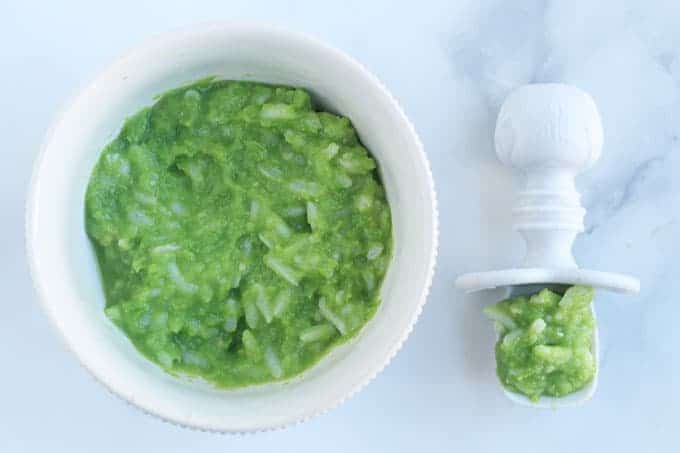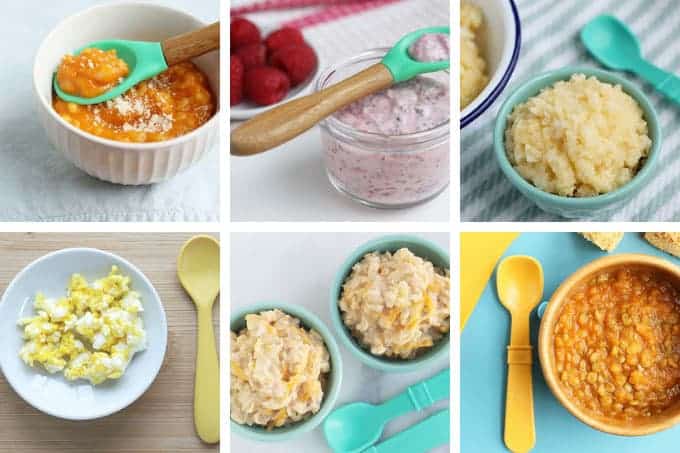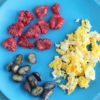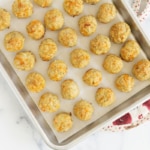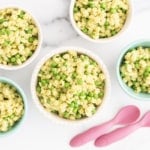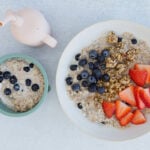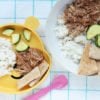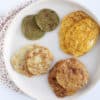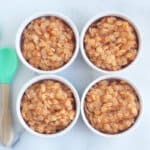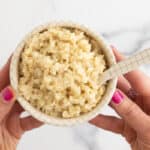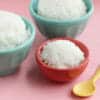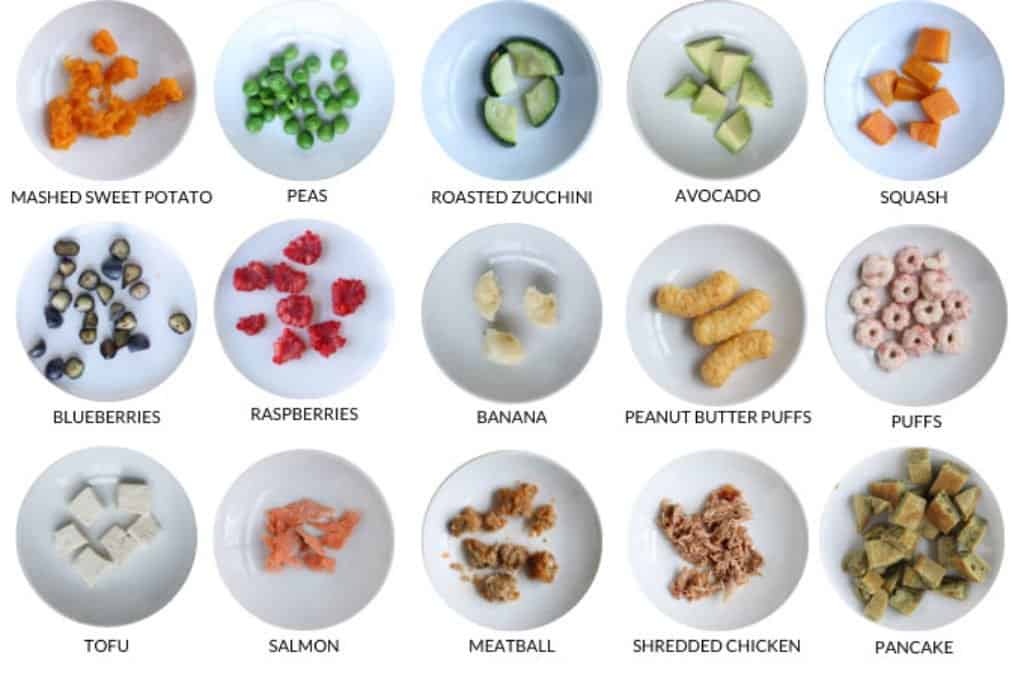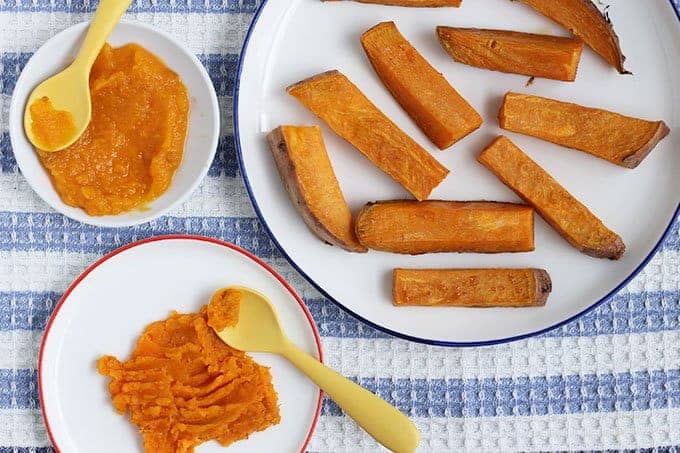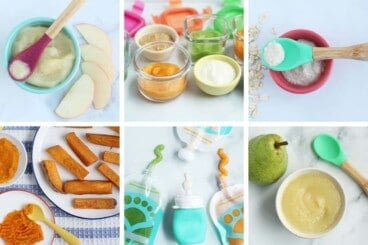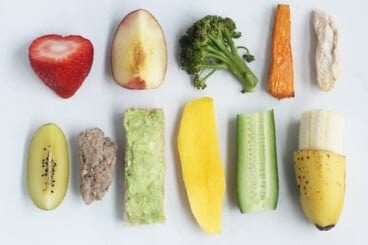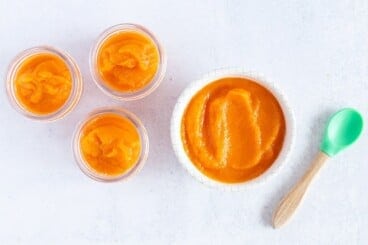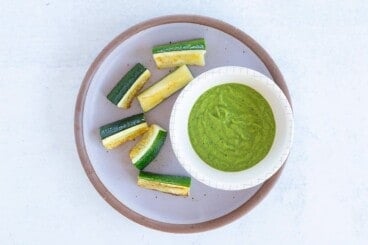Baby Food Stages, Explained
Labeling food for baby with stages—which you may see in the baby food aisle at the grocery store and online in baby food recipes—can help parents offer foods in a specific order of textures. With the traditional method of starting solids, we progress from thinner and very smooth baby food purees to thicker and with more texture. This allows baby to learn gradually and progress from very thin purees when first introducing solids to more traditional finger foods (or soft table foods) by the time they reach their first birthday. Understanding the basics of this can help offer baby a chance to practice textures as they learn to eat. You can, of course, go the baby-led weaning route if you choose, or even do a combination of the two methods. And a quick note: The American Academy of Pediatrics recommends “…breastfeeding as the sole source of nutrition for your baby for about 6 months.” Or, of course, formula (which seems like an oversight for them not to mention). So that’s the information I use as a starting point here, so the process of introducing solids starts around 6 months. TIP: Learn more about how to know if baby is ready to start solids and my go-to store-bought baby food options.
Stage 1 Baby Food
This includes very thin, smooth purees that are most often made with just one main single ingredient—of any food group such as fruits, vegetable, meat, dairy, whole grain, or other type of food. You can thin them further with additional water, breast milk, or formula, and they’re sometimes described as “drippy”. Think: Very thin pureed soup. Sign up for our email updates to get tips and ideas sent to your inbox. Baby may push some of the food out of her mouth as she learns how to swallow, she may want to hold the spoon herself, or she may not be interested at all. All of these are normal parts of the learning process, so continue following baby’s lead. Age: 6+ months (ish) and up (though some pediatricians still recommend starting at 4 months). TIP: Baby usually tries one food a day at the start to give her system a chance to slowly adjust to solids. (Expect diapers to change, too!)
Stage 1 Recipes to Try
These are a few of my favorite early purees to offer. You can make them right before you plan to serve them or ahead of time. Store the baby food in the fridge or freezer for future meals. And make sure baby is safely sitting upright in the high chair. TIP: Find tips on how to freeze baby food here.
Stage 2 Baby Food
This includes slightly thicker purees with more texture and may include more than one ingredient. Foods like yogurt, grains, hemp seeds, and more can be in this category. And this is a great time to be sure you’re including a lot of flavors. You can mix savory foods together or do a sweet and savory blend. The goal in this phase is to give baby the chance to explore slightly more complex textures and get to taste a lot more flavors. Age: 7-8+ months (ish) and up You can also offer these purees in a pouch on occasion, by holding it up to baby’s mouth and allowing him to suck it. Remember not to use pouches exclusively or even most of the time since you want baby to develop the ability to move food around in his mouth in more ways than just sucking. They need to learn how to use their tongue to move many textures around their mouths. TIP: Save time and energy by trying out the awesome Intro to Veggie Pack from Amara Organic Baby Food. You get 30 meals packed with a wide range of veggies including greens, squash, peas, sweet potatoes, and more. It’s a great way to offer more variety without the work! (sponsored)
Stage 2 Recipes to Try
Below you’ll find some of my go-to recipes for this stage. You can also simply add Baby Rice Cereal, Baby Oatmeal, or hemp seeds to a baby food puree for a quick and easy way to add texture. TIP: Check out my Best Baby Food Combinations too!
Stage 3 Baby Food
This includes thicker mashed foods with even more texture and usually includes multiple ingredients. There will be bits of food for baby to chew and may include some foods that baby can pick up with her fingers like soft avocado or slightly mashed raspberries. This Stage 3 is an easy time to start using more of the food you’re making for the rest of the family (if you haven’t already) and simply prepare it into a chunky mash. Age: 9 (ish) months and up TIP: Some babies may be very hungry at this stage, so hearty purees can be a great way to satisfy their hunger. I made a lot of grains and pasta in simple pureed sauces for my oldest at this age!
Stage 3 Recipes to try
These are great recipes for this stage that can also be shared by the rest of the family. Aim for foods that are soft and easy to squish between your fingers. Dice up foods like meatballs into about the size of two peas so they are easy for baby to pick up and eat. TIP: Find full info about Stage 3 Baby Foods here.
Finger Foods
This category of baby food includes small, pea-size foods that are soft (easily squishable between two fingers) and are easy for baby to pick up with their fingers once they master their “pincer grasp.” You can see a full list of the Best Early Finger Foods for Babies for ages 9-10 months (ish) and up.
Best Tips for Success
Always follow the lead of your unique baby. Some may be more interested in food than others (or on some days than others). There is a lot of variation within these categories. Stop meals when baby turns his head, pushes away the spoon, starts to fuss, or gives any other signals that he is not interested in more food. There is no reason to force “one more bite.” Offer baby preloaded spoons of purees—put a little puree on the spoon and hand it over—if she seems interested in being more in charge of what goes into her mouth. Try to include iron-rich foods in baby’s diet from the start of solids, as well as potential food allergens (unless there’s a known allergy or history of severe eczema—check with your pediatrician in that case). Long-sleeve bibs can be helpful for keeping baby’s clothes clean if meals are messy. Avoid common choking hazards including hard raw vegetables and fruits, round foods like whole grapes, popcorn, chewing gum, gummy candy, and more foods found in this choking prevention guide. Also avoid honey until baby is over age 1 to avoid the risk of botulism. Use a blender, baby food maker, fork, or food processor to puree or mash food as needed. Always talk to your pediatrician when starting solids and for medical advice.
I’d love to hear your feedback on this post, so please comment below!
Master List of Baby Food Recipes
Ultimate Guide to Baby Led Weaning (and Best First Foods)
Favorite Carrot Baby Food
Favorite Zucchini Baby Food
This post was first published January 2021.
